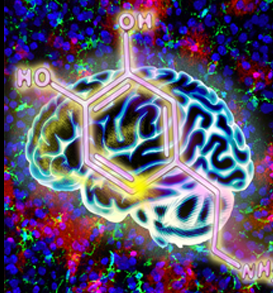
A recent study published in PNAS provides a precise 3-D whole-brain atlas for the cholinergic system and the complete morphology of individual cholinergic neuron in the basal forebrain.

A recent study published in Genome Biology demonstrated that an entire Chromosomecould be eliminated by CRISPR/Cas9-mediated genome editing. This work was performed by researchers in Dr. YANG Hui’s Lab at the Institute of Neuroscience and State Key Laboratory of Neuroscience, CAS Center for Excellence in Brain Science and Intelligence Technology, Chinese Academy of Sciences, and Dr. HU Jiazhi’sLab at the Peking University.

A recent study published in Nature uncovered the genetic basis of natural variation in aging rate. This work was carried out by researchers from Dr. CAI Shiqing’s lab at the Institute of Neuroscience and State Key Laboratory of Neuroscience, CAS Center for Excellence in Brain Science and Intelligence Technology, Chinese Academy of Sciences.

A recent study carried out by Dr.Tan et al from Dr. XIONG Zhiqi’s laboratory, at the Institute of Neuroscience, Chinese Academy of Sciences, showed that PRRT2 is a presynaptic protein that interacts with components of SNARE complex and down-regulates its formation.

A new research from the Center for Excellence in Brain Science and Intelligence Technology, CAS, reported on a novel volume imaging and 3D tracking technique that monitors whole brain neural activity in freely swimming larval zebrafish. This study was carried out collaboratively between Dr. WANG Kai and Dr. WEN Quan.

A recent study published in Autophagy demonstrated that Mir505-3p regulated axonal development by targeting Atg12 and autophagy pathway. This work was performed by researchers in Dr. ZHOU Yuxun’s team at the Donghua University and Dr. QIU Zilong’s Lab at the Institute of Neuroscience, Chinese Academy of Sciences.This work provided another evidence supporting the role of autophagy in neural development.

A recent study carried out by Dr. SUN Yangang’s lab discovered a central neural circuit that is critical for transmitting the itch signal. The study was published in Science.

A recent study entitled “A critical role of pre-synaptic cadherin/catenin/p140Cap complexes in stabilizing spines and functional synapses in the neocortex” from Dr. YU Xiang’s lab at the Institute of Neuroscience, Chinese Academy of Sciences was published in Neuron on June 21, 2017. The effect of the cadherin/catenin requires p140Cap —— a novel β-catenin interacting partner.
A recent study published in Cell Research demonstrated that single gene or multiple genes could be nearly 100% deleted in all cells of CRISPR/Cas9-injected mice and monkeys, using a modified “C-CRISPR” approach.

A recent study published in Cell Research demonstrated that homology-mediated end joining (HMEJ)-based strategy can induce robust and efficient DNA targeted integration using CRISPR/Cas9. This work was performed by researchers in Dr. YANG Hui’s Lab.

Using zebrafish and cytobow-based clonal analysis, Dr HE Jie's team identified the cells in the second or the third layer of the CMZ as the RSCs which were slow-cycling as compared to retina progenitors in CMZ. Moreover, the study also identified a novel set of dormant CMZ tip cells, which may serve as a critical cellular component in the niche.

A recent study published online in Cell Research reported that neurons transfer miR-132 into brain vascular endothelial cells (ECs) via exosomes to promote brain vascular integrity. This study was performed by Dr. DU Jiulin’s research group in the Institute of Neuroscience and the Center for Excellence in Brain Science and Intelligence Technology, Chinese Academy of Sciences.

A recent study by Dr. YAN Jun’s lab at the Institute of Neuroscience, Chinese Academy of Sciences, was published in Nucleic Acids Research on March 8. It uncovered that a class of enhancer-associated circadian long noncoding RNAs (lncRNAs) mark the genomic loci modulating long-range circadian gene regulation.

A recent study published in Cell Reports systematically analyzed the circuit mechanism underlying dynamic control of serotonergic neuron in the rodent brain. This work was performed by researchers in Dr. SUN Yangang’s Lab. This work advanced our understanding of the mechanisms regulating the serotonin system, which could have important impact on studying the mechanisms of mental disorder.

A recent study published in PNAS demonstrated that monkeys showed spontaneous mirror self-recognition (MSR) behaviors after learning precise visual-proprioceptive association for mirror images. This work was performed by researchers in Dr. GONG Neng’s team.
